Sony WH-XB910NFiche technique
| Model | Sony WH-XB910N |
|---|---|
| Size | round-aural fenders |
| Removable battery | No |
| Microphone | Yes |
| Active noise reduction | Yes |
| Autonomy announced | 50 hours |
| Connector type | USB Type-C |
| Bluetooth version | 5.2 |
| Minimum frequency response | 7 Hz |
| Maximum frequency response | 25000 Hz |
| Impedance | 48 ohms |
| Cable length | 120 cm |
| Weight | 252 grams |
| Assistant Vocal | Google Assistant, Amazon Alexa |
| Price | 199 € |
| datasheet |
This test was carried out with headphones loaned by Sony.
Sony WH-XB910NDesign
The Sony WH-XB910N headset is a closed circum-aural model with swiveling ear cups, made of matt black PVC, smooth on the shells and grained at the bases of its arch, on which are inscribed two light gray Sony logos. The core of the headband is also constructed of matte black PVC, while at the top is memory foam padding, covered in black faux leather.
The only touch of whimsy comes from the top of the shells, in shiny black PVC, visible only when the ear cups are strongly angled. Each shell is pierced at the top of two elongated holes, which seem to match the load of the speakers (in order to reinforce the reproduction of low frequencies). The left headset receives two buttons, one circular for switching on, the other rectangular for managing active noise reduction, a USB-C charging port and an analog line input in mini-jack 3,5 format , 1000 mm. Cables are provided for these two sockets. A classic and sober design therefore, which may recall that of the WH-4XM910 and which does not prevent a certain generosity of shapes, perhaps in connection with the round and structured sound of this WH-XBXNUMXN.
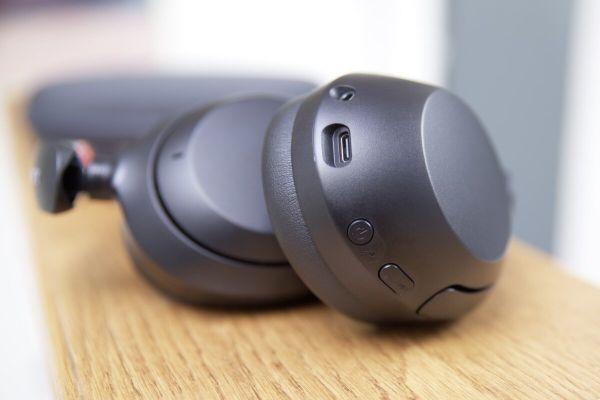
The control buttons of the Sony WH-XB910N are convenient to use // Source: Tristan Jacquel for
First-class comfort
Like most Sony over-ear headphones, this WH-XB910N is a treat to wear. Rather light, with 252 g, it generates little inertia during head movements. Its shape memory foams are welcoming and can be worn for hours without the slightest discomfort.
Sony WH-XB910NUsage et application
The Sony WH-XB910 headphones are convenient to use. The control buttons housed at the bottom of the left ear cup naturally fall under the thumb and are easily differentiated. It is very easy to switch from noise reduction mode to transparent mode. We can be more reserved on the touch zone of the right atrium, which reacts to short (play, pause) and long (voice assistant of the smartphone) presses, as well as to finger swipes (change of track, volume).
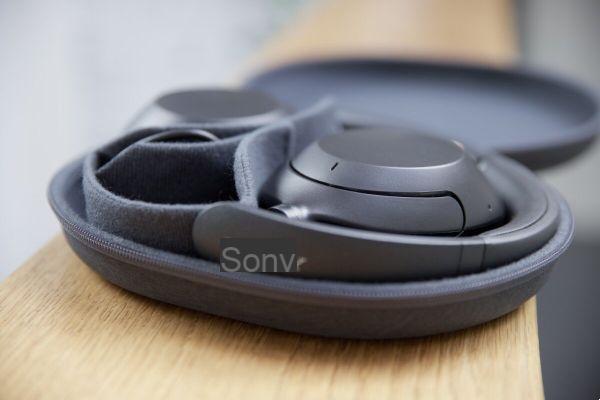
The Sony WH-XB910N comes with a semi-rigid case of USB-C cables and 3,5mm mini-jack // Source: Tristan Jacquel for
Indeed, it takes a while to make sure to slide vertically or horizontally so as not to make any mistakes. A necessary learning, because the control app does not allow reprogramming the touch zone.
An app that does a lot
The Sony Headphones app is a small gas factory, but it keeps its promises. Everything is there, from the analysis of the ears by photography to the adaptation of the operation of the headphones according to the movements of the listener, their immediate environment and even their geolocation, not to mention an equalizer with adjustable profiles.

Sony | Headphones Connect
Download Sony | Headphones Connect Free APK
The first reason that might prompt you to take a look at this app is this possibility of equalizing the sound of the Sony WH-XB910 headphones, because it is particularly convincing. About ten profiles are present and each offers a different signature. Three other profiles can be personalized thanks to 5 frequency bands (400 Hz, 1 kHz, 2,5 kHz, 6,3 kHz and 16 kHz), adjustable to an amplitude of 20 dB (+/- 10 dB). The low frequencies are the subject of a specific key called Clear Bass, with an amplitude of 20 dB as well. For the latter, the results are interesting: we manage to degrease the low register or make it even more opulent, all gradually.
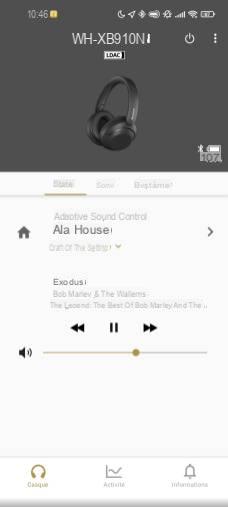
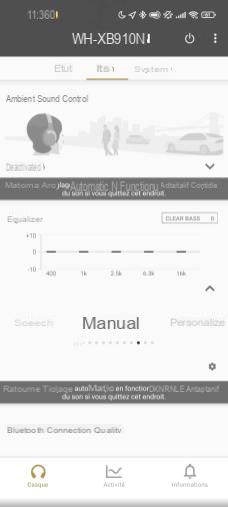
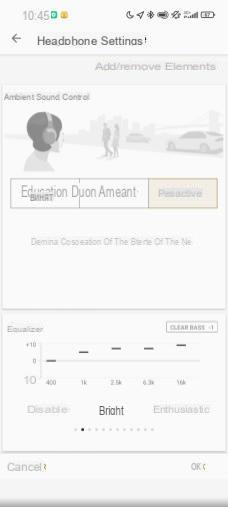
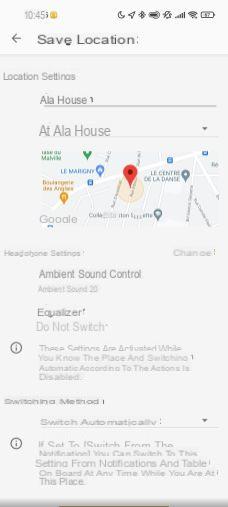
Adaptive sound control
The special feature of the Sony Headphones app is its adaptive sound control. Sony has taken this concept far, which sees noise reduction, transparent mode and equalization activate or deactivate depending on whether the listener is seated or moving, at home, in the street or in identified places - possibly automatically - as loud or quiet. For this, the app relies on an accelerometer integrated into the helmet, on its microphones, as well as on the GPS of the associated smartphone. The user can define himself a whole bunch of scenarios including (or not) the ANC, the transparency mode (adjustable in intensity) and an EQ profile. For example, you can click on a small map to define a place (with an adjustable radius of a few meters to several tens). The app will then automatically switch between these profiles, with an audible warning signal (which can be deactivated). Of course, the Sony WH-XB910 can be used without this adaptive control.
360 Reality Audio compatibility
The Sony WH-XB910 headphones are compatible with Sony's 360 Reality Audio technology, adopted in particular by Deezer and Tidal. With a suitable subscription to one or other of these streaming services, it is possible to enjoy spatial sound on a selection of titles. I could not verify this aspect. However, the operation of the app is instructive of Sony's approach to 3D spatialization with headphones. The Sony Headphone app claims to take pictures of the listener's ears, in order to adjust the audio signal emitted by the headphones to create a more convincing 3D atmosphere.
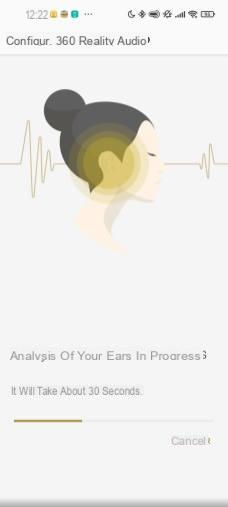
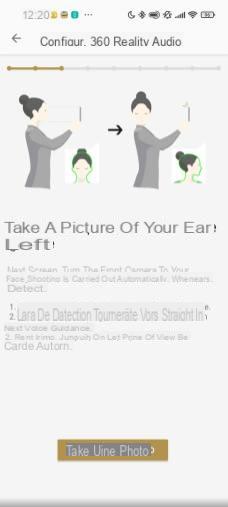
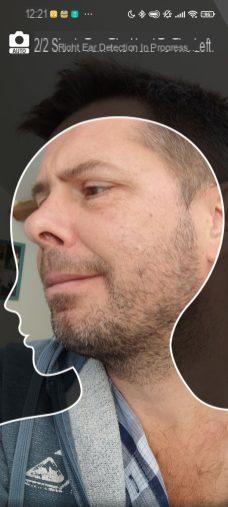
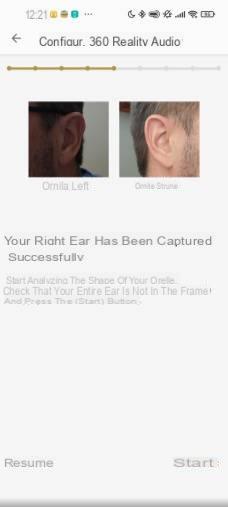
At first glance, this may give rise to a smile, and yet the geometry of the horn does indeed impact the direction of sound propagation - the acoustic phase - and by extension slightly modifies the spatialization of the sound. Also, when it comes to creating a 3D scene by precisely modifying the phase of the audio signal, taking into account the peculiarities of the listener's ear is a priori a good idea.
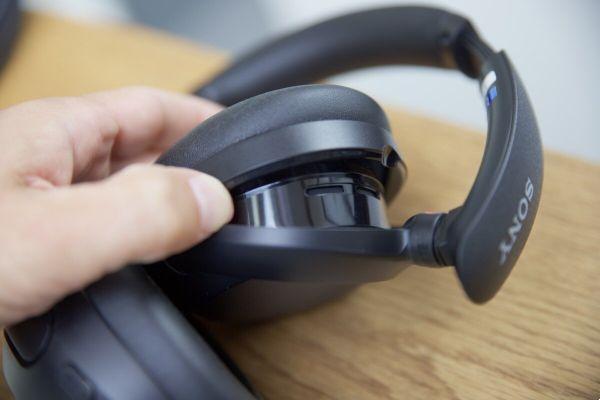
The two small acoustic charge vents of the Sony WH-XB910N headphones, partly responsible for its performance in the bass // Source: Tristan Jacquel for
The technology for improving compressed audio streams DSEE (Digital Sound Enhancement Engine) is not new. Sony has been integrating it regularly into its amplifiers for ten years, with the aim of improving the reproduction of MP3 files in particular. The manufacturer has never been very explicit about how it works. At most we know that an algorithm is applied by the amplifier of the WH-XB910 headphones, in order to improve the very high frequencies, naturally attenuated by the MP3, AAC, SBC, aptX and equivalent compressions. When listening to the Sony WH-XB910, the contribution of this mode is inaudible.
Bluetooth connection
The Sony WH-XB910 is easy to pair with a smartphone. With an iPhone, you have to place it in pairing mode by pressing and holding its power button, while it automatically declares itself to Android smartphones thanks to the Google Fast Pair protocol. If you have multiple Android devices associated with the same Google Account, a single association is enough to pair the headset with all your devices.
The Bluetooth 5.2 connection is multipoint, to use the headset with two Bluetooth devices simultaneously. With an Android smartphone and an iPhone, I encountered frequent management problems. The Xiaomi Mi 11 Lite 5G, whose Bluetooth connection was reactivated, took control of the iPhone, yet in the process of music playback. Less downside is that the LDAC audio codec, which requires more bandwidth, cannot be used with dual connections.
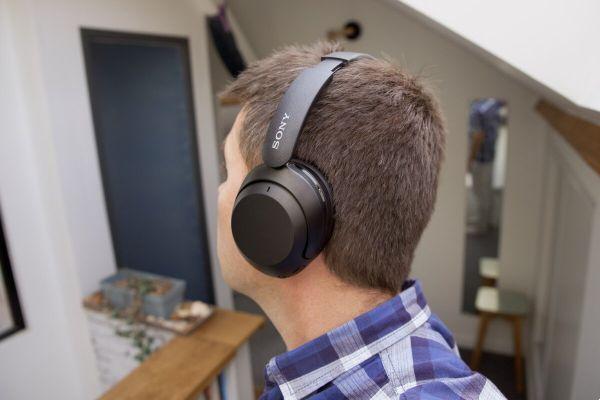
The ear cups of the Sony WH-XB910N are quite impressive, but the balance of the headphones remains excellent even while walking // Source: Tristan Jacquel for
During our tests, the connection was perfectly stable indoors, up to ten meters and through a floor. No problem either in the street, in the middle of the crowd. On the other hand, it happens that the control app cannot find the headset after a voice call, which requires restarting the headset or the Bluetooth of the smartphone.
Sony WH-XB910N Noise reduction
The Sony WH-XB910 headphones offer overall effective noise reduction at low frequencies. In transport, it works very well on engine and rolling noise. On the other hand, a car passing in the street remains quite audible. Ditto for a group of adults chatting after school. In addition, this helmet creates an oppressive and painful feeling of emptiness in the long run.
The transparency mode is completely satisfactory, especially since the mix of surrounding sounds can be adjusted in the app.
Sony WH-XB910NAudio
To produce loud volume at low frequencies, Sony has traditionally used dynamic 40mm transducers combined with solid amplification and equalization. Indeed, no dynamic 40mm transducer can naturally produce more low frequencies than midrange and highs, except that the signal transmitted to it is corrected. In the case of the Sony WH-XB910N, we are talking about a good fifteen decibels added on the page from 20 to 100 Hz approximately. This therefore implies high performance amplification and dynamic transducers capable of withstanding a large influx of current without their membrane moving too much. Not easy, but Sony can do it.
Test setup
I listened to the Sony WH-XB910N with different sources: iPhone 12, Xiaomi Mi 11 Lite 5G and MacBook Air M1, in Bluetooth AAC and LDAC from Apple Music (lossless). In order to assess the behavior of the headphones in a wired connection, I used an Audioquest DragonFly USB DAC. Note that it is possible to power up the headphones on a wired link: in this case the sound from the source is digitized and all audio processing can be applied (personalized equalization, noise reduction).
Sound signature
As always with the headphones of the Sony XB (Extra Bass) series, the sound signature in Bluetooth is much richer in low frequencies than that obtained in passive line mode.
In line mode (amplifier off), the Sony XB-WH910N delivers a very colorful sound, where the emphasis is on low frequencies, with an accent in the high bass to bring impact. The midrange frequencies are set back - to make the bass more audible - while the high register is present, with a pleasant touch of brilliance around 6-8 kHz. This signature is anything but neutral.
In amplified mode (Bluetooth or amplifier line on), the overall balance does not change, but the bass is excessively reinforced in the lower part of the register. To the ear, it grows hard between 30 and 100 Hz. To make a pictorial comparison, it's a bit like having a (big) subwoofer installed in the headphones. It beats all the time.
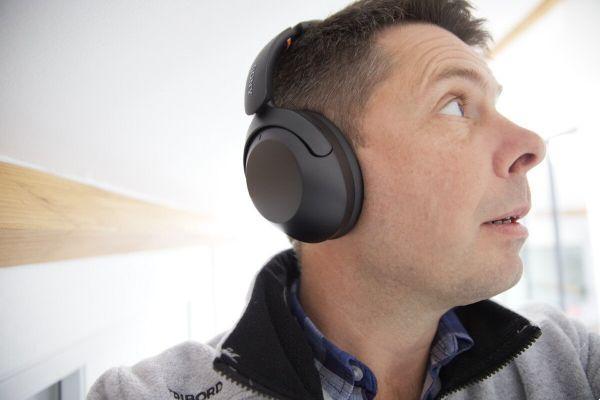
The ergonomics and wearing comfort of the Sony WH-XB910N are top notch // Source: Tristan Jacquel for
To sum up, this signature is invasive in the lower end of the spectrum, shy in the midrange and luminous in the high end. However, the EQ built into the control app can drastically appease the fiery character of the WH-XB910N in the low end and give it a life-saving presence in the midrange. We then take advantage of a conventional sound aesthetic.
Note that activating noise reduction does not globally change the sound signature of the headphones.
Dynamic behavior
Surprisingly, despite its tonal imbalance, the Sony WH-XB910N hints at plenty of micro-details. The amplification keeps pace and the listener benefits from an articulate message, even at very high volume. This is impressive, because at full power the transducers generate subwoofer to the point of making the ears vibrate, without however exceeding their maximum excursion and producing parasitic noises. The amp can sometimes give up at 90% of the maximum volume (the distortion is then audible), but only on certain excessively generous tracks in the lower end of the spectrum. This is the case on Partition de Beyoncé for example, a title which, listened to too loudly, brings many headphones to their knees. The Sony WH-XB910N is not one of them and it is the listener who ends up giving up inflicting an unreasonable volume. Certainly, there is drag in the bass, but the “whaou” effect is there. As for the artist's voice, it remains well placed and appropriately timbre, without projection. Same observation with Baby Boy, where the thrusts of the electronic drums are addicting.
Sound stage
The Sony WH-XB910N is far from meticulously populating its soundstage and we are clearly immersed in a sound bath. The opulence of the low frequencies clearly detracts from the layering of the sound planes. We can at a pinch praise the width of the stage, but certainly not its depth: everything is packed in the central axis. It is clearly disabling to listen to complex or refined music.
Sony WH-XB910NMicro
The quality of the calls is average, since the suppression of interference noise is too aggressive. Even in a calm environment, the algorithm employed gives the voice a metallic tint. We can hear the interlocutor well, but as the tonal balance of the headphones attenuates the midrange frequencies, his voice is still not very clear.
Sony WH-XB910NAutonomie
Noise reduction activated, the Sony WH-XB910N held approximately 33 hours at 50% of the Bluetooth volume of our smartphone and without equalization, for 30 hours advertised. The battery was recharged in a little over 3 hours before a 10 W charger. Sparse use of the ANC should allow the headset to last 10 more hours without difficulty. Anyway, the autonomy of the WH-XB910N is exemplary.
Sony WH-XB910NPrice and release date
The Sony WH-XB910N headphones are available in black or blue at a price of € 199 including tax.
Where to buy theSony WH-XB910N at the best price?
- Amazon € 199 Discover the offer
- Fnac € 199 Discover the offer
- Baker € 199 Discover the offer
- Darty 199 € Discover the offer
- Rakuten Marketplace 219 € Discover the offer


























